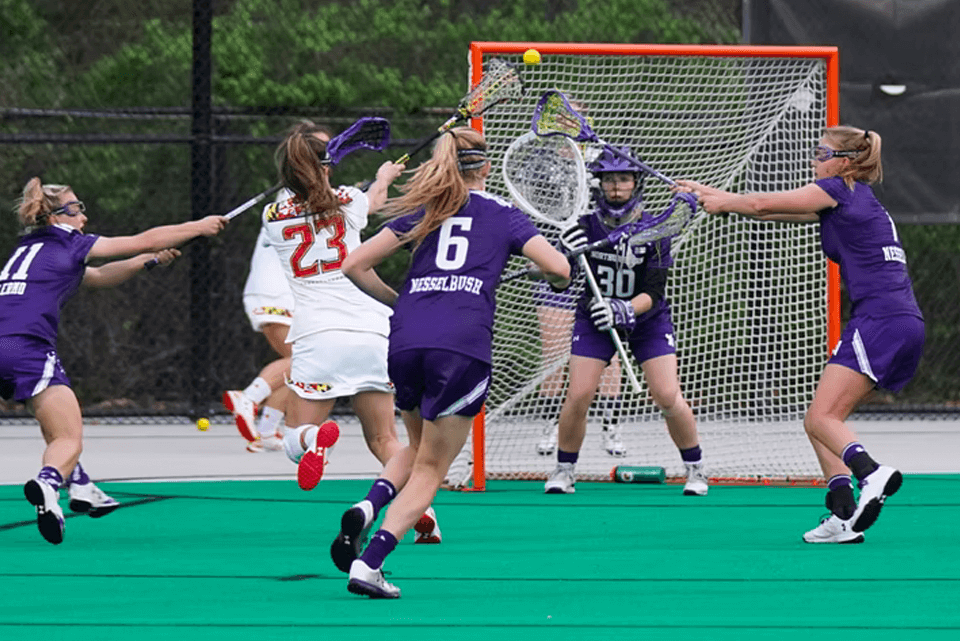
As you are reading this, picture a pre-med student who has a 3-hour chemistry lab, followed by an hour-long physics class. Now picture her running from class straight to the weight room for an hour of strength training then directly to a 3-hour lacrosse practice. After practice she spends an hour watching game film on tomorrow’s opponent before heading to study hall for 3 hours preparing for her physiology mid-term.
Sound tough?
This is the norm for collegiate student-athletes around the country trying to balance elite level physical competition with the rigors of higher education.
Research has shown that physical stress and mental stress have similar effects on the human body. Therefore, it is easy to understand why student-athletes are at a much higher risk for injury during strenuous academic periods.
Researchers at the University of Missouri studied 101 Division I football players for 20-weeks and found that 60 of the athletes had 86 different injury restrictions during this time. The researchers then polled the players’ stress levels throughout the semester, which were highest during midterms and finals. During these stressful periods the athletes were found to be 3 times more likely to sustain an injury than during non-stressful time periods.
Statistics like these demand strength and conditioning coaches take action during high stress academic periods to do their part to minimize the risk of injury.
Making a Change from Inside the Weight Room
Per Dr. Bryan Mann, Assistant Director of Physical Therapy and Assistant Director of Strength and Conditioning at the University of Missouri, stress is systemic and is a culmination of everything a player deals with on a daily basis. Whether it is practice, weight training, finals, or stress in their personal life, everything contributes to the wellbeing of the athlete. Therefore, as athletic performance professionals it is imperative to be proactive instead of reactive during high stress academic periods.
What does that mean for you? First it means planning for a deload period in the weight room. Workouts that last 20-30 minutes with minimal rest periods and lighter loads work best. With this adjustment, most athletes report a sense of a “second wind” and some newfound energy after spending excessive time in front of their textbooks and computers.
Second, it is important to “major in the major” and choose exercise patterns that give you the most bang for your buck and prescribe corrective exercises to compliment those patterns. This allows you to continue training through high stress academic periods without eliminating weight room sessions completely. Additionally, it is also critical to spend more time on recovery, both physically and mentally. These sessions work to “bridge the gap” between practice and studying to clear the mind and activate the parasympathetic nervous system.
Preventative Interventions Need to Start on Day One
Aside from altering your training plan during high academic stress periods, it is important to monitor and prepare on the front end. Tracking athletes using readiness questionnaires and session RPE throughout the year leading up to finals week will allow you to develop an understanding of what your athletes’ baseline is and will allow you to pick up on red flags for stress individually and globally as a team. What separates the great athletic performance coaches from the average is their ability to individualize training and educate head coaches to buy into these strategies. It is imperative to get everyone on the same page and provide clear and concise data to the head coach. This will help guide coaches to make educated decisions about practice intensity and duration.
Coming Together
The key to optimizing training to reduce injury during high stress academic periods is not found in one place. Rather, it is the combination of all of the strategies listed above that will lead to success.
To recap;
- Deload in the weight room
- Keep the training sessions short with minimal rest
- Choose exercises that give you the most bang for your buck
- Spend more time on recovery
- Understand your athletes “normal” through session RPE, and
- Educate the head sport coach to get everyone on the same page
With all the pieces in place, now is the time to put this plan into action and be on the road to a healthier, stronger season.
Co-authored with George Greene.